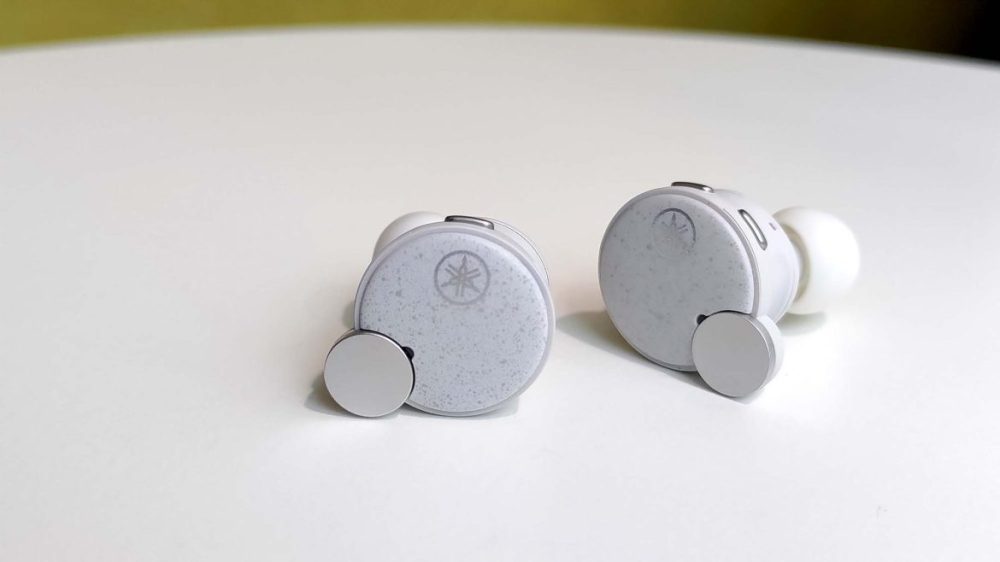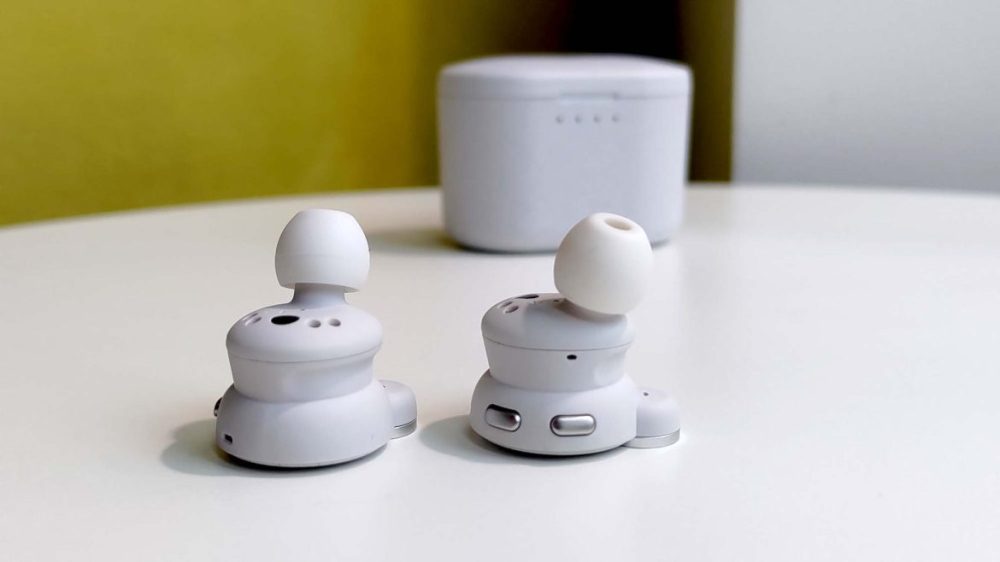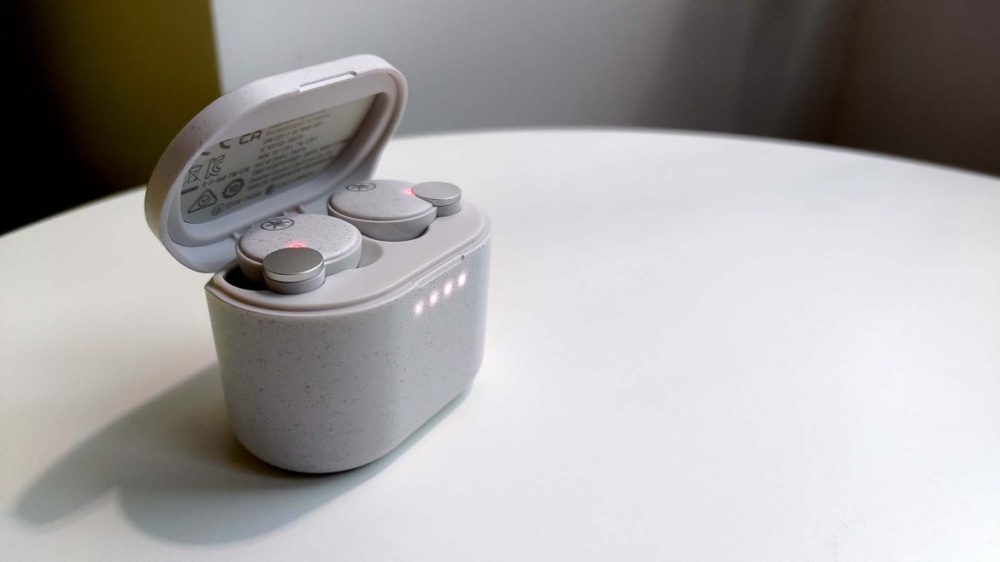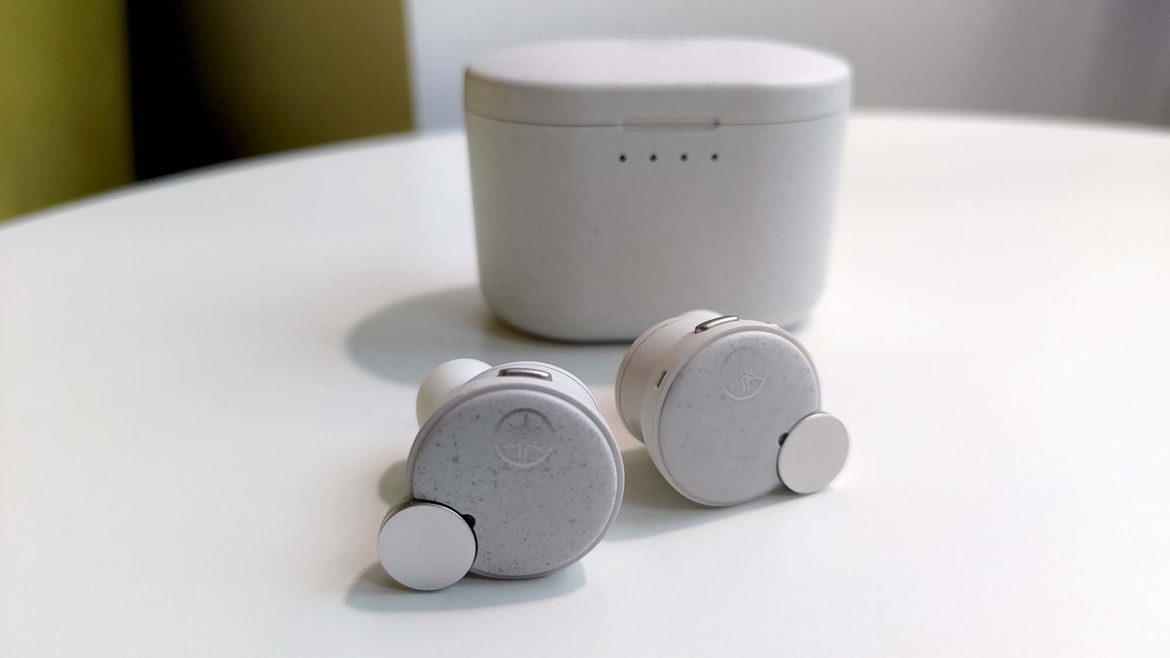TL;DR
Yamaha's TW-E7B earbuds aim for the premium market but miss the mark. While they boast a stylish design and a decent soundstage (especially for acoustic music), their user experience is hampered by non-customizable physical buttons, uncomfortable and unstable fit due to their size, and underwhelming active noise cancellation. The companion app is basic, and key features like Listening Care and Optimizer aren't on by default, feeling more like afterthoughts. Despite Yamaha's audio pedigree, these TWS buds struggle to compete with established rivals. Curious to see if the sound quality is enough to overcome the drawbacks? Read the full review to find out.
The Yamaha TW-E7B arrived with considerable anticipation, given the manufacturer’s reputation for audio excellence. Positioned in a similar price bracket to the Sony WF-1000XM4 at its launch, and boasting a comparable feature set, a key question emerged: could this be a true contender for the top spot? Regrettably, our evaluation revealed that the Yamaha TW-E7B ultimately fell short of these expectations.
Overall
Upon unboxing, the Yamaha TW-E7B exudes a premium feel, with careful attention to detail evident in the packaging. The earbuds themselves are aesthetically pleasing, featuring a distinctive design that subtly evokes imagery from the Star Wars universe. The package includes five sizes of ear tips, a USB-C cable, and the charging case – a promising start.
The earbuds offer a battery life of 6 hours, extendable by an additional 16 hours via the charging case. Battery status is indicated by four LEDs on the case’s front. Each earbud houses a 10mm driver and weighs 7.3g, figures that closely align with the Sony WF-1000XM4. However, at this point, Yamaha diverges in its design choices.

Yamaha’s implementation of physical buttons – two on the right earbud and one on the left – is a notable design choice. However, the inability to customize button functions presents a usability challenge. Users must memorize the pre-assigned controls. This can be particularly cumbersome for users who regularly switch between different earbud models, as consistency in control schemes is lost. Furthermore, playback control is assigned to one earbud, while volume adjustment resides on the other. This necessitates a choice between functions when using a single earbud, such as while cooking.
The Yamaha Headphone Control App
The accompanying app is relatively basic. It offers an EQ with five preset profiles and two customizable slots. Users can also select their preferred listening mode. The Yamaha TW-E7B incorporates three optimization features: Listening Care, which aims to preserve sonic detail at lower volumes; Listening Optimizer, which analyzes fit and sound leakage in real-time; and Gaming Mode, designed to reduce latency for improved audio synchronization.
The rationale for not having these optimization features active by default remains unclear, though power conservation is a likely explanation. However, this is not explicitly stated, nor is the potential battery life extension quantified. Consequently, these features come across as more of a gimmick than a core functionality, suggesting capabilities that arguably should be integral to the listening experience.
Comfort
A primary design concern with the Yamaha TW-E7B is its physical size, particularly its height. The earbuds protrude noticeably, making a secure fit challenging (a similar issue encountered by Panasonic/Technics with their initial TWS premium earbuds). Achieving both comfort and a stable position proves equally difficult. Even after experimenting with the various ear tip sizes, a compromise is unavoidable. The largest tips provide a tight seal but can become uncomfortable over extended use, while the medium tips enhance comfort but allow more ambient sound to enter. Ultimately, no option provides an ideal balance.

While headphone fit is subjective, the Yamaha TW-E7B faces a considerable disadvantage compared to models like the Sony WF-1000XM4, which offer a more natural and secure fit from the outset.
Sound Quality of the Yamaha TW-E7B
Soundstage
The soundstage performance is commendable, albeit not exceptional. Initial listening impressions suggest a need for some equalization adjustments. The higher frequencies exhibit a slight dullness, lacking some crispness. However, this can be readily addressed via the app’s EQ settings, resulting in a more pleasing soundstage. Notably, the earbuds excel in reproducing acoustic music. Dave Weckls – Dis´ Place This is delivered with brilliance, exhibiting a lively character and revealing subtle nuances. While the headphones perform adequately across various genres, they particularly shine with acoustic material. The bass reproduction is energetic and impactful without becoming overbearing. The width and acoustic capabilities are well-demonstrated by Hans Zimmer – Buyer Beware, which transforms into a captivating sonic experience.
Passthrough
The passthrough functionality is adequate. However, when music is playing, awareness of the surrounding environment is diminished. The absence of smart features, such as voice focus or adjustable passthrough levels, is also a drawback.
Noise Cancellation
The noise cancellation exhibits limited effectiveness. Snapping fingers near the head reveals minimal difference compared to the “Off” mode. A slight reduction in lower frequencies is noticeable, but the overall impact is marginal. The option to adjust the noise cancellation level would have been beneficial.

Conclusion – Yamaha TW-E7B
The Yamaha TW-E7B True Wireless headphones present several shortcomings that detract from their overall value, particularly when compared to the benchmark Sony WF-1000XM4, currently priced around SEK 2,300. The button controls are complex and non-configurable, achieving a comfortable fit is challenging, and the battery life is merely acceptable. The latter would be less concerning if the charging speed were faster. The Yamaha TW-E7B’s strength lies in its soundstage, which, after EQ adjustments, delivers excellent and engaging musical experiences.
However, these strengths are insufficient to elevate the Yamaha TW-E7B to a competitive level. At a price point of approximately SEK 3,000, expectations are higher; the headphones should captivate and maintain user interest with intuitive operation. Unfortunately, the Yamaha TW-E7B does not fully achieve this.
Yamaha provided the test unit for this review. The provision of review samples does not influence our editorial process.
Playlist for testing:
⦁ Thomas Bergersen – Empire of Angels
⦁ Seven Lions – Freesol
⦁ Solar Fields – Sombrero
⦁ Hans Zimmer – Mombasa
⦁ Agnes Obel – Familiär
⦁ Alan Jackson – Drive
⦁ Dave Weckl – Dis´Place This
⦁ Von Dinkelmeyer – Countach 1988
⦁ Michael McCann – Watchtower
⦁ Armin van Buuren – Beautiful Life
⦁ Dawn Upshaw – Lorsque Vous N’Aurez Rien A Faire (from Cherubin)
